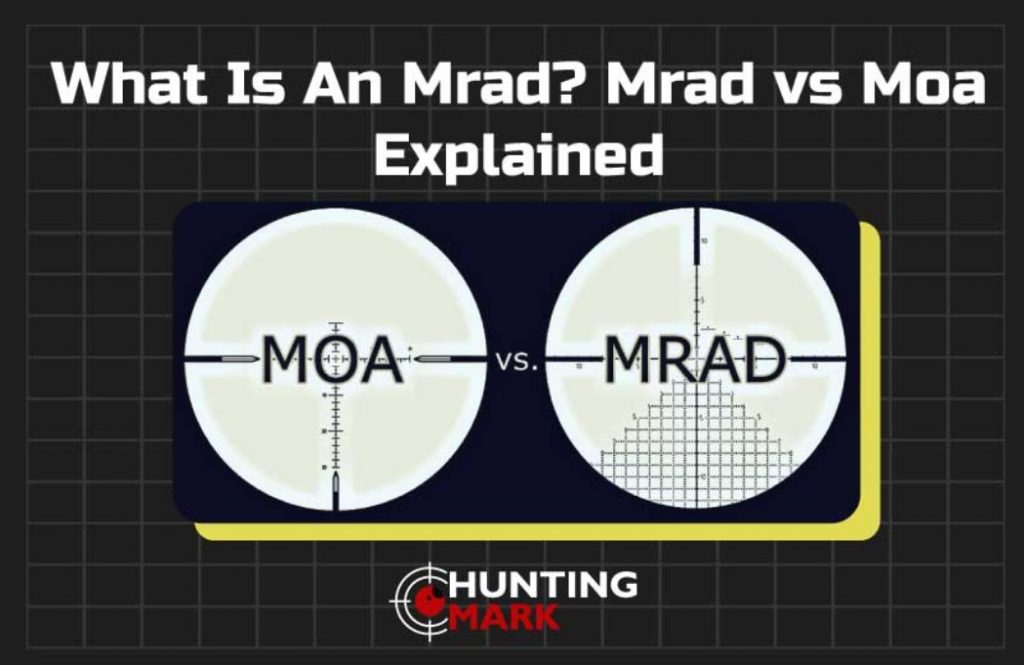Know your measurements
Spring 2025
By Ben Baker
If you shop for gun scopes, you will see the abbreviation MRAD. Sometimes, you will see MIL, which is the same thing, just different letters. MRAD = MIL. I will use the term MRAD to make things easy.
MOA is similar to MRAD but still different. MOA is also an abbreviation. It stands for Minute Of Angle (MOA).

Look at a scope and the measurements it uses. Every scope has a reticle. You change the position of the reticle using the adjustment controls. These adjustments are also called click value because, on traditional scopes, the knobs click as you move them.
MRAD is the abbreviation for the word milliradian. Strictly from the math side of things, MRAD is a measurement of an angle. It is based on the metric scale.
When talking about gun scopes, MRAD is a measurement of distance. For our purposes, 1 MRAD is 1 centimeter at 100 meters. The best gun scopes offer click values in 1/10 of an MRAD.
Putting this in Imperial measurements (American), an MRAD is equal to 3.9 inches at 100 yards. At 100 meters, the MRAD is a tiny bit larger because 100 meters is a longer distance than 100 yards.
A scope with 1/10th of an MRAD adjustment means the reticle moves .39 inches at 100 yards and a hair more at 100 meters.
On the Imperial scale (American), a centimeter is .39 inches, and 100 meters is 109.361 yards. The difference between 100 yards and 100 meters is around 27 feet.
IMPORTANT – Do not get caught up converting inches to centimeters and back. Your rifle scope does not do the math. Sight your gun in at the range you want to shoot. Then, learn how to shoot at different distances using that scope.
MRADs were developed for the military. When shooting cannons and big armaments, the gun’s barrel is moved up and down to change the elevation. The movement is measured along an arc, and MRADs provide the precision needed for such large weapons of war.
Big guns often have an angle dial on the side or somewhere nearby so gunners can compute the needed degree of raising or lowering the big guns.
The military still uses MRADs, and many law enforcement agencies also use the MRADs in their sniper weapons.
MOA is also a measurement using angles. It is the abbreviation for Minute of Angle.
For shooting and scope purposes, an MOA works out to be about an inch of distance at 100 yards. If you want to be exact, it is 1.047 inches at 100 yards.
Going from Imperial to metric, 100 yards works out to be 91.44 meters.
Most civilian scopes use MOAs for the adjustments. The most common click value is 1/4 MOA. Some sniper scopes offer 1/8 MOA. A few have ½ MOA, and some red dots have 1 MOA click value.
If you read the above carefully and do some rudimentary math, you will see that a scope with ¼ MOA click values offers a tighter adjustment than a scope with 1/10 MRAD.
You are looking at ¼ of an inch (MOA) vs. about ⅓ of an inch (MRAD) at 100 yards. Yes, ¼ of an inch is smaller than ⅓ of an inch. Here is the math ¼ + ¼ + ¼ + ¼ = 1 inch. For the ⅓ equation, ⅓ + ⅓ + ⅓ = 1 inch.
Using decimals instead of fractions, an MOA is .25 inches. An MRAD is .3333 inches.
Strictly on the numbers, MOA offers more accuracy than MRAD. But is that difference really enough to matter?
No.
Reach this out to 1,000 yards. At that distance, a 1/10th of MRAD is 3.6 inches. An MOA at 1,000 yards is 2.63 inches. So, at 1,000 yards, there is a 1-inch difference between the two.